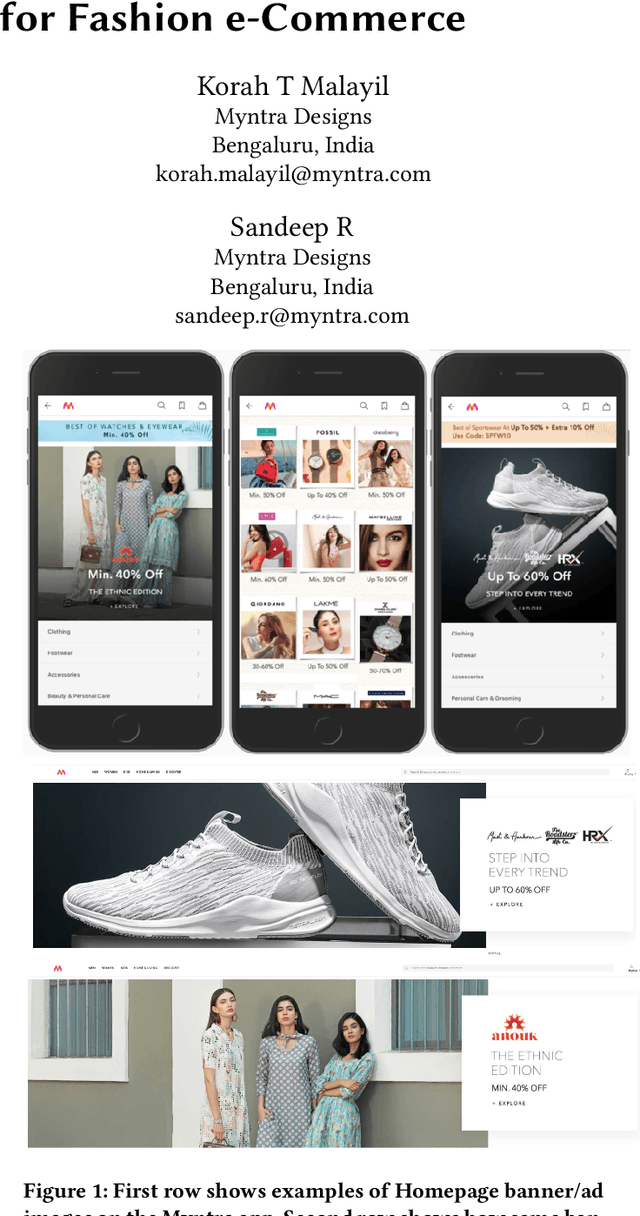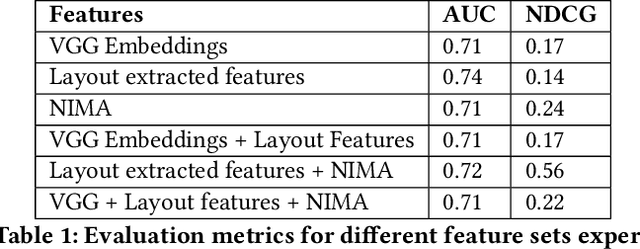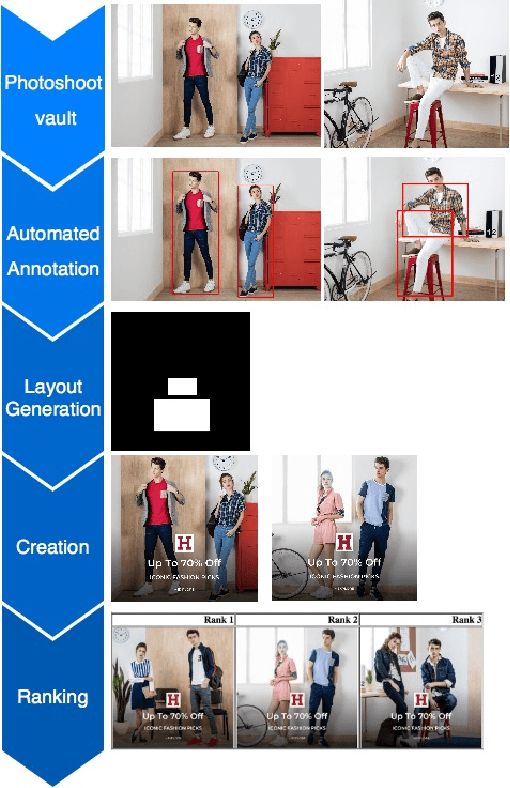Korah T Malayil
Diversify and Conquer: Bandits and Diversity for an Enhanced E-commerce Homepage Experience
Sep 25, 2023Abstract:In the realm of e-commerce, popular platforms utilize widgets to recommend advertisements and products to their users. However, the prevalence of mobile device usage on these platforms introduces a unique challenge due to the limited screen real estate available. Consequently, the positioning of relevant widgets becomes pivotal in capturing and maintaining customer engagement. Given the restricted screen size of mobile devices, widgets placed at the top of the interface are more prominently displayed and thus attract greater user attention. Conversely, widgets positioned further down the page require users to scroll, resulting in reduced visibility and subsequent lower impression rates. Therefore it becomes imperative to place relevant widgets on top. However, selecting relevant widgets to display is a challenging task as the widgets can be heterogeneous, widgets can be introduced or removed at any given time from the platform. In this work, we model the vertical widget reordering as a contextual multi-arm bandit problem with delayed batch feedback. The objective is to rank the vertical widgets in a personalized manner. We present a two-stage ranking framework that combines contextual bandits with a diversity layer to improve the overall ranking. We demonstrate its effectiveness through offline and online A/B results, conducted on proprietary data from Myntra, a major fashion e-commerce platform in India.
Enabling Hyper-Personalisation: Automated Ad Creative Generation and Ranking for Fashion e-Commerce
Aug 27, 2019



Abstract:Homepage is the first touch point in the customer's journey and is one of the prominent channels of revenue for many e-commerce companies. A user's attention is mostly captured by homepage banner images (also called Ads/Creatives). The set of banners shown and their design, influence the customer's interest and plays a key role in optimizing the click through rates of the banners. Presently, massive and repetitive effort is put in, to manually create aesthetically pleasing banner images. Due to the large amount of time and effort involved in this process, only a small set of banners are made live at any point. This reduces the number of banners created as well as the degree of personalization that can be achieved. This paper thus presents a method to generate creatives automatically on a large scale in a short duration. The availability of diverse banners generated helps in improving personalization as they can cater to the taste of larger audience. The focus of our paper is on generating wide variety of homepage banners that can be made as an input for user level personalization engine. Following are the main contributions of this paper: 1) We introduce and explain the need for large scale banner generation for e-commerce 2) We present on how we utilize existing deep learning based detectors which can automatically annotate the required objects/tags from the image. 3) We also propose a Genetic Algorithm based method to generate an optimal banner layout for the given image content, input components and other design constraints. 4) Further, to aid the process of picking the right set of banners, we designed a ranking method and evaluated multiple models. All our experiments have been performed on data from Myntra (http://www.myntra.com), one of the top fashion e-commerce players in India.
 Add to Chrome
Add to Chrome Add to Firefox
Add to Firefox Add to Edge
Add to Edge